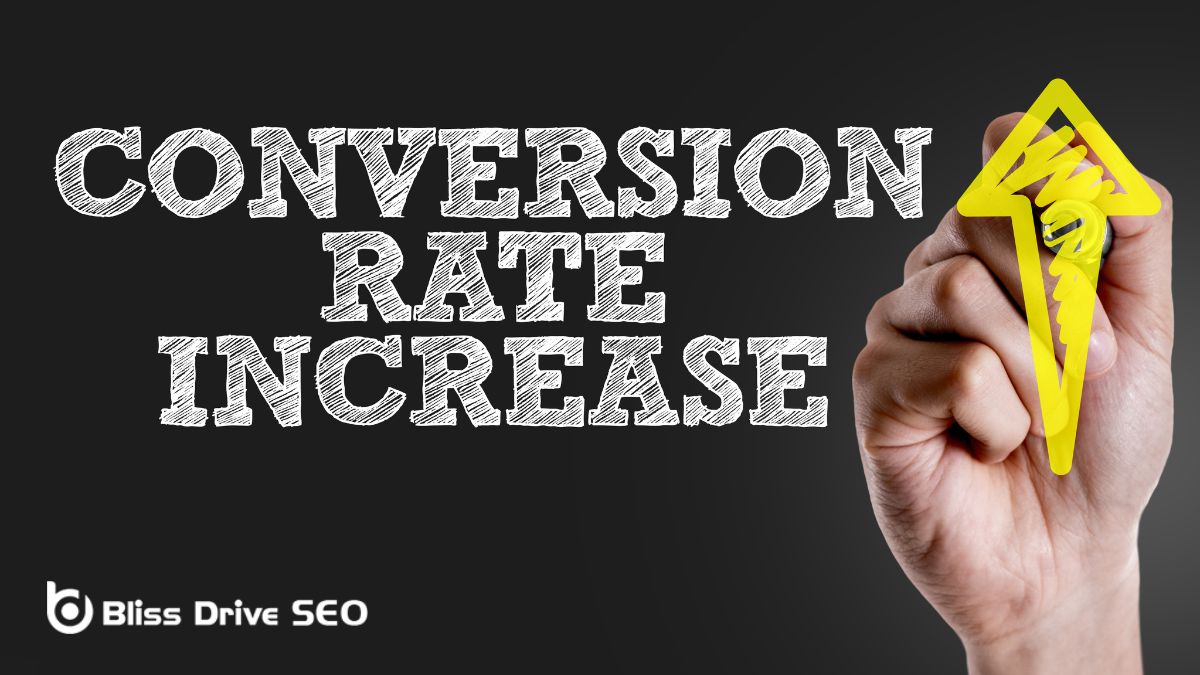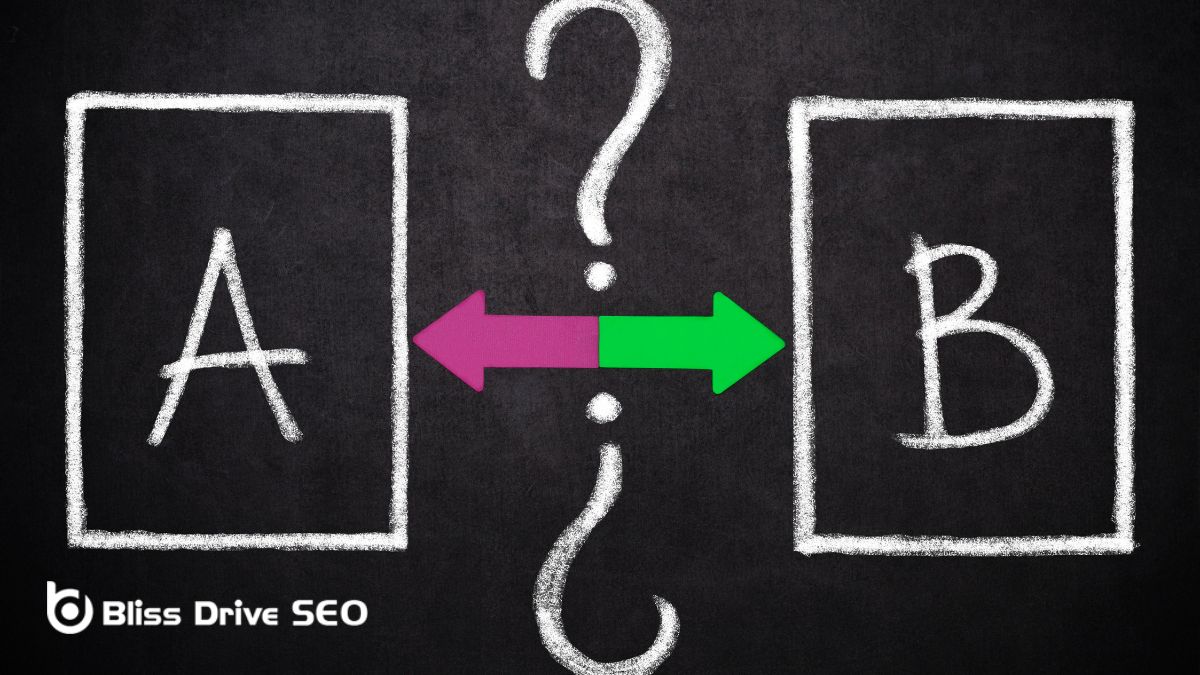Learn More About Us

If you're looking to boost your website's conversionThe completion of a desired action by a referred user, such as making a purchase or filling out a fo... rates in 2024, effective A/B testingA method of comparing two versions of a web page or app against each other to determine which one pe... strategies are essential. By setting clear goals and focusing on specific test elements like visual layouts, messaging variations, and call-to-action designs, you can identify what truly resonates with your audience. The key lies in analyzing the data and interpreting the results to make informed decisions. This approach not only optimizes user engagementThe level of interaction and involvement users have with social media content. but also drives continuous improvements. Wondering how to design impactful test variants and implement these insights for maximum effect? Let's explore the steps to elevate your conversion strategies.

Understanding A/B Testing starts with recognizing its core purpose: comparing two versions of a webpage to see which one performs better regarding conversion rates. By doing this, you can identify which version enhances user engagementThe interactions that users have with a brand’s content on social media. and drives more conversions. A/B testing is a powerful method that allows you to make data-driven decisions, taking the guesswork out of your marketing strategies.
To enhance user experience, you might consider extending A/B testing into A/B/n testing, where multiple versions are tested against the original. This approach can provide deeper insights into user behavior and help you fine-tune your web pages for peak performance.
Additionally, multivariate testing can be employed to test various combinations of elements simultaneously, identifying the most effective combination for conversion optimization.
Using reliable testing tools is essential for gathering actionable data. These tools not only streamline the testing process but also provide detailed analyticsThe systematic computational analysis of data or statistics to gain insights and support decision-ma... that guide your decisions. Companies that use A/B testing can see up to a 30% improvement in conversion rates, underscoring its significant impact.
Ultimately, understanding A/B testing and its methodologies like A/B/n and multivariate testing can leadA potential customer referred by an affiliate who has shown interest in the product or service but h... to better optimization, improved user engagement, and higher conversion rates.
Setting clear goals in A/B testing is fundamental for measuring success and guaranteeing your tests align with business objectives. When you set defined goals, you can pinpoint key performance indicators (KPIs) like click-through rates or conversion rates, making it easier to gauge the effectiveness of your experiments.
To make your A/B testing truly impactful, your goals need to be measurable and specific. This precision helps you capture actionable insights, driving real improvements in user engagement and conversion rates. Here are some steps to keep your goals on track:
Once you've nailed down your goals and KPIs, the next step in A/B testing is choosing the appropriate elements to test. For effective conversion rateThe percentage of visitors who complete a desired action, such as making a purchase or filling out a... optimization, pinpoint specific components like headlines, images, CTAs, or pricing. By focusing on these, you can better understand their impact on user behavior and conversion rates.
It's essential to test one element at a time to accurately measure its effect. For instance, altering your website copy can greatly influence how users perceive your product or service. Similarly, experimenting with color schemes and button placement can significantly affect user interactions. Even small adjustments to form fields can lead to substantial changes in conversion rates.
Selecting the right test elements should be guided by clear goals and hypotheses. By doing so, you can make data-driven decisions that lead to meaningful improvements. Are users dropping off at a particular step? Maybe your CTA isn't persuasive enough, or perhaps your form fields are too cumbersome.
When designing test variants, focus on making specific changes to elements like visual layout, copy and messaging, and CTAs. By altering one aspect at a time, you can clearly see which modifications impact user behavior and conversion rates. This approach guarantees that your A/B tests provide actionable insights for optimizing your webpage.
In A/B testing, you often find that visual layout changes can have a significant impact on user behavior and conversion rates. By tweaking design elements like colors, fonts, and images, you can discover what resonates best with your audience. Testing different button placementsSpecific websites or locations within websites where ads can appear., sizes, and styles can notably alter user interactions and boost conversion rates. Similarly, experimenting with product images or banners can enhance user engagement and click-through rates.
To keep your audience engaged and your tests effective, consider these factors:
A data-driven analysis of these visual changes will help you identify the most effective elements for improving conversion rates. By understanding how visual layout influences user perception, you can make informed decisions that enhance your site's overall appeal.
Effective A/B testing for copy and messaging can significantly enhance your conversion rates. By experimenting with different headlines, you could see a 10% increase in click-through rates. It's vital to craft compelling headlines that grab attention and entice users to explore further.
Meanwhile, tailoring your product descriptionsDetailed information about a product, including features, benefits, and specifications. can result in a 25% uptick in sales. Experiment with various tones, lengths, and details to discover what resonates most with your audience.
When it comes to email campaigns, changing email subject lines through A/B testing can improve open ratesThe percentage of recipients who open an email. by 30%. Test different wordings, lengths, and even emojis to see what prompts your recipients to open your emails. This immediate feedback helps you refine your approach for better engagement.
Don't overlook the significance of the call-to-action (CTA) in your copy and messaging. Adjusting CTA language based on test results can enhance conversions by 15%. Experiment with different verbs, urgency levels, and benefits to find the most impactful phrasing.
A/B testing in copy and messaging isn't just about small tweaks; it's about understanding what motivates your audience. By systematically testing and refining your copy, you'll uncover what truly boosts your conversion rates, click-through rates, and overall sales.
After optimizing your copy and messaging through rigorous A/B testing, it's time to focus on your call-to-action (CTA) designs. A/B testing different CTA designs can greatly enhance your conversion rates. For instance, simply testing various button colors can lead to a 21% boost in clicks. You should also consider changing your CTA text to make it more action-oriented; this can result in a 93% increase in conversions.
To keep your audience engaged and drive more conversions, consider these strategies:
These tactics not only enhance the visibility of your CTAs but also align better with user expectations and behavior, leading to higher engagement. By continuously A/B testing and refining your CTA designs, you're likely to see a noteworthy increase in your conversion rates, making your marketing efforts more effective.

When you're running A/B tests, it's important to have a clear strategy in place to compare two versions of a webpage effectively. A/B testing is a powerful tool that helps you increase conversion rates by directly comparing user engagement between two variations. Start by using testing software to set up your experiments and guarantee you collect accurate user data.
A/B testing can lead to a significant increase in conversion rates, sometimes up to 30%. The key is to focus on creating statistically significant results by running tests long enough to gather meaningful data. This helps you make data-driven decisions to enhance your website's performance.
For more complex scenarios, consider A/B/n testing, which lets you compare multiple versions against the original, or multivariate testing, where you test different combinations of webpage elements. Both methods can provide deeper insights and help you optimize conversion rates more effectively.
Always remember that the goal is to gather actionable data that will guide your decisions. By understanding user behavior through A/B testing, you can make informed changes that boost user engagement and conversion rates, ultimately leading to a more successful website.
When you're analyzing test results, focus on interpreting key metrics like conversion rates, bounce rates, and engagement levels. Pay close attention to KPIs such as click-through rates and session duration to gauge test success. Understanding statistical significance and comparing variations will help you pinpoint what drives conversions, guiding future optimization efforts.
To effectively analyze A/B test results, you must rely on statistical significance to confirm the data is reliable. It's important to confirm your findings aren't due to random chance. A/B testing tools like Google Optimize or VWO can help you dive deep into the nuances of user behavior and understand the impact of test variations on conversion rates.
Here are key techniques to guide your data interpretation:
Understanding the main metrics to monitor during A/B testing can make or break the success of your optimization efforts. Start by focusing on conversion rate changes. This metric is critical as it directly reflects how your test variations influence user behavior.
Analyzing bounce rates and session duration will help you understand the level of engagement your variations are generating. If users are spending more time on your site but not converting, you might need to tweak your strategy.
Click-through rates are another essential metric. They measure the effectiveness of different elements tested, such as buttons or links, showing you which version drives more interactions.
Don't forget to evaluate revenue and sales data too. These metrics will show the financial impact of your A/B test results, helping you understand if the changes are boosting your bottom line.
Additionally, heat maps and user recordings should be used to gain deeper insights into how users interact with the tested elements. These tools can reveal patterns in user behavior that quantitative metrics might miss, offering a more detailed view of the effectiveness of your A/B testing efforts.
Implementing changes through A/B testing can greatly enhance your website's performance, potentially boosting conversion rates by up to 30%. To achieve this, you need to utilize A/B testing tools like Google Optimize, VWO, and Optimizely, which help in making data-driven decisions for website optimization.
Start by setting clear goals and success metrics. Defining what success looks like will guide your efforts and guarantee your testing is focused and effective.
When it comes to A/B testing, following best practices can make the difference between meaningful insights and misleading data. Start by testing one element at a time. This guarantees you can accurately pinpoint which changes drive improvements.
Consistency in test conditions is essential to maintaining reliable outcomes.
Make sure you have an adequate sample size and duration for your tests. This is crucial for achieving statistical significance. Without it, your results might lead you astray.
Avoid the mistake of stopping tests prematurely; instead, gather enough data to reach conclusive results. This practice will help you make informed decisions and drive meaningful improvements.
Iterative testing is your path to continuous enhancement. By constantly refining your tests, you can optimize conversion rates effectively over time.
Set clear goals before you begin. Knowing what you aim to achieve helps steer your testing strategy toward success.
Lastly, use reliable tools like Google Optimize or VWO to implement and manage your tests. These platforms support successful strategies by providing robust features and insights.
Why is A/B Testing Important for Increasing Conversion Rates?
A/B testing is critical for optimizing website performance and improving conversion rates because it allows businesses to make data-backed decisions. By testing different elements on a site, companies can understand what drives customer behavior, leading to more effective engagements and increased sales.
Which Elements Should Be A/B Tested to Improve Conversions?
To effectively boost conversion rates, consider testing:
How Do I Ensure My A/B Tests Are Effective?
To conduct effective A/B testing, follow these steps:
Can A/B Testing Impact SEO?
If not handled carefully, A/B testing can affect SEO. To minimize any negative effects:
By focusing on specific test elements and analyzing key metrics, you can make informed decisions to boost your website's conversions. Remember to set clear goals and design effective test variants. Run your A/B tests diligently and interpret the results to implement impactful changes. Follow these best practices, and you'll continuously improve user engagement and drive higher conversion rates. With effective A/B testing strategies, your business is on the path to success in 2024.
